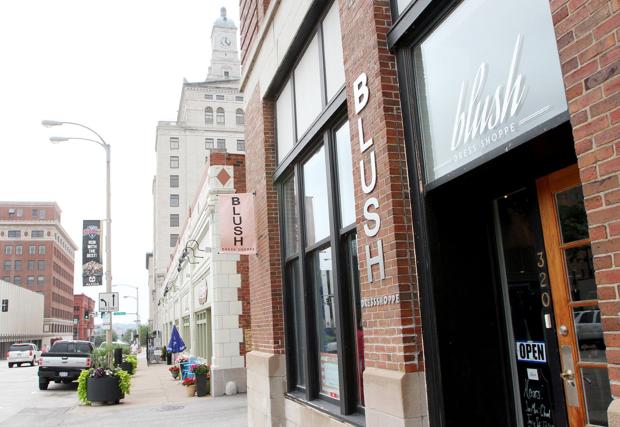
If you live near a hospital, you’ve probably seen the sight: a young
physician in loose blue scrubs, standing in line at the grocery store. You can’t
help but wonder if the young physician is lost. After all, it appears that he or
she belongs in an emergency room — not the dairy section.
The oversized bottoms, dangling bright orange pyjama knot, deep V-neck and
beeper ensemble not only look out of place, but lead to a slew of thoughts. Is
he coming from or going to a shift? Could her clothes carry some sort of
hospital microbe? What detritus has the outfit picked up on public transit or in
line at the ATM that will track back to an operating room or patient? Has the
American trend toward casual attire gone too far?
Regardless of profession, we all play out the sartorial ritual of considering
colours, textures, and garments for work, school and play.
Clothing for doctors is more than just a matter of personal style: it is an
emblem of their specialty, training and culture.
Making a good first impression
In some cases, a physician’s attire is functional. A surgeon’s scrubs protect
regular clothes from stains and patients from infection.
Sometimes, it’s about creating a good first impression and projecting the
more professional, conservative image often associated with medicine.
Go to a doctor’s office, for instance, and you’re more likely to find
physicians donning a shirt and tie, or jacket and blouse when interacting with
their patients. In almost all of these cases, the emblematic uniform of
physicians — the white coat — is present.
This month, about 20,000 newly minted physicians will enter residency
programs across America, to begin their professional journeys. Each will care
for and influence the lives of countless patients.
And each has been trained to avoid “anchoring bias,” or to not to take the
first thing they learn about a patient as the most important, lest they reach a
biased conclusion or incorrect diagnosis. Yet few doctors or medical students
consider the first impression they make on patients. And clothes have a lot to
do with that.
In an informal survey in our hospital, only two out of 30 medical students
said that they actually thought about their dress when caring for hospitalised
patients. Yet, over half of the medical students we spoke to agreed that what
they wear is likely to influence patient opinions about their doctors. This
illustrates a larger discrepancy between what doctors ought to wear and what
they do wear — one that may arise from competing concerns or lack of
guidance.
Just like the treatment doctors provide, that guidance should be grounded in
evidence. For instance, a special report from infection-prevention experts found
little evidence that germs on male doctors’ neckties, long sleeves, or white
coats actually spread infections in a nonsurgical setting. So bans on such
garments, such as those in place in some countries, may go too far.
Patients really like white coats
We recently published a study reviewing all available evidence regarding
patient preferences for physician attire. We examined more than 30 studies that
evaluated how patients viewed physicians’ attire.
In 21 of those studies, we found that patients had strong preferences about
what physicians wore. And it looks like patients more often prefer for their
doctors to wear formal clothing and white lab coats than not. Indeed, in 18 of
the studies we reviewed, patients had a preference or positive association with
this style of attire.
But as we reviewed these studies, three keys themes that suggest important
variations in what patients may prefer their doctors to wear emerged. First,
studies involving older patients or those from Europe or Asia all reported
higher satisfaction when physicians wore formal attire.
Second, in emergency, surgical or intensive care settings, scrubs were not
only preferred by patients, but also more often equated with professionalism.
This makes sense, as in these more “hands-on,” procedure-oriented settings,
formal suits, shirts and ties clearly seem out of place.
Finally, in doctors’ offices and outpatient clinics, scrubs were viewed
unfavorably and often resulted in negative impressions.
Thus, from the patient’s perspective, a “one size fits all” approach may not
work for doctor attire. Rather, the context in which a patient interacts with
their doctor influences what they expect to see.
Given the tension between infection risk and patient preferences, it is not
surprising that disagreement about dress code also exists among physicians.
After our study came out, the medical news website MedPage Today reported
results from an informal, but still telling, online survey of over 2,000
patients and physicians about the “best approach to dressing for patient
encounters.”
About 30% of doctors polled stated that they preferred to wear scrubs, casual
attire or had no particular preference when caring for patients. However, more
than 60% stated that doctors should wear white coats.
The online comments differed widely, with some physicians defiant in stating
that they had “never worn a white coat in 30 years,” while others proclaimed,
“priests and judges have their robes, we have our white coats.”
And despite clear patient preferences about what doctors wear while working,
even the top-ranked hospitals in the nation, only a handful offer formal
guidance on attire. Many vaguely recommend that clothes be “professional,” but
without defining what professional means?
A dress code for docs?
How, then, should doctors dress when caring for patients? Clearly, more
evidence is needed to guide members of the medical community. So we have
launched a large study that aims to better understand what patients prefer when
it comes to physician attire.
We plan to survey thousands of patients from the US, Italy, Switzerland and
Japan in settings that span outpatient clinics, doctors offices and hospitals.
Because generational effects and familiarity matter, we will specifically assess
how factors such as age or how often a person interacts with the health system
shape patient opinions.
While we collect data for this study, what best practices can we recommend in
the interim, especially those 20,000 brand new residents?
When in doubt, formal attire with long-sleeved shirts and ties for men, and
business attire for women, should prevail in nonemergency or nonoperative
settings.
This practice should hold true not just for weekdays, but also when
physicians are working weekends and after typical business hours. Patients and
their expectations remain unchanged, regardless of hour or day.
While scrubs are appropriate for operating or emergency rooms, we suggest
changing into more formal attire to visit patients in the hospital or the
clinic. Regardless of the occasion, flip-flops, showy jewellery or jeans simply
don’t belong in the hospital, just as scrubs do not belong outside the hospital
environment. Especially not in the grocery store.







